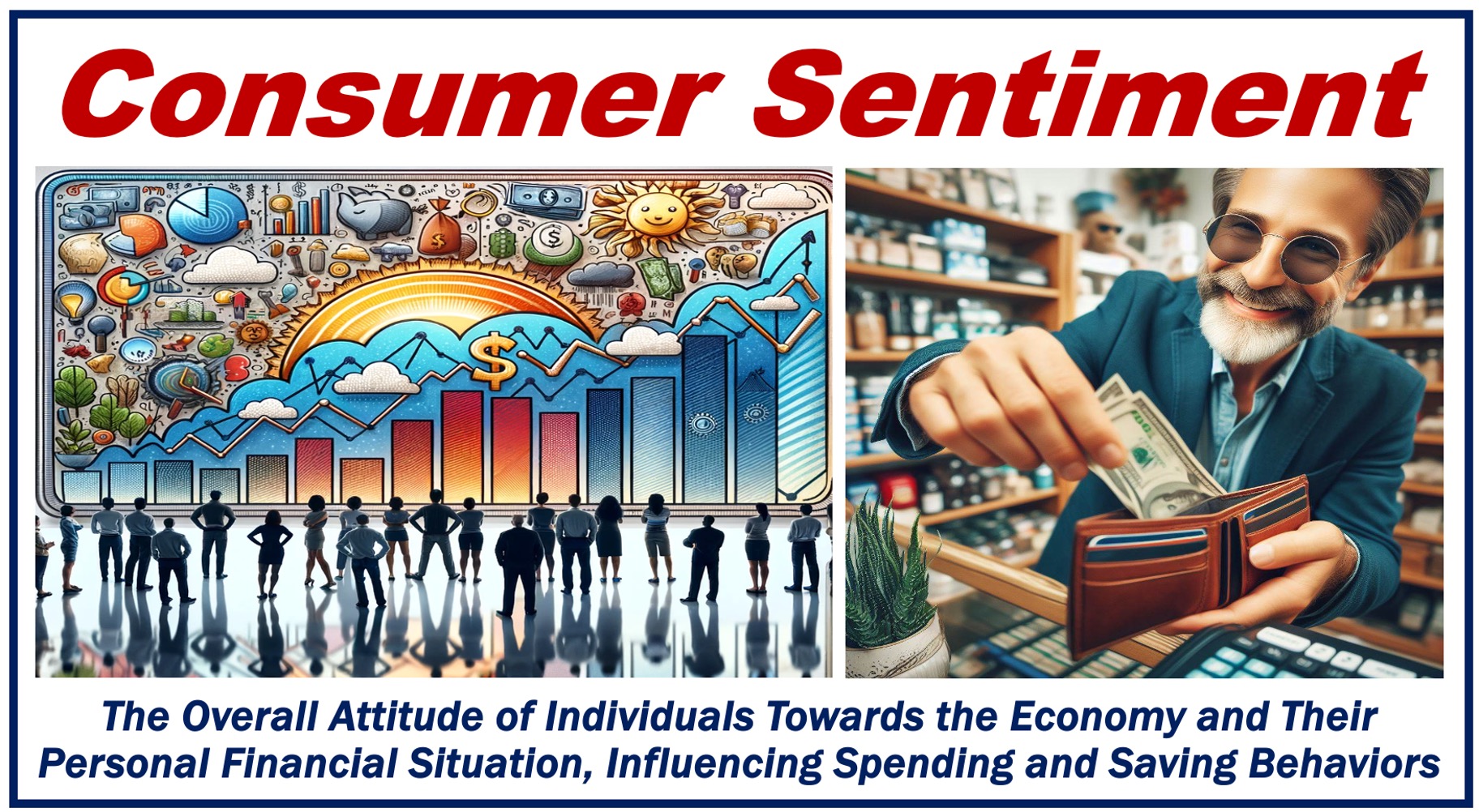What is Consumer Sentiment?
Consumer Sentiment measures how people feel about the economy now and their own financial future. It is a term often encountered in economic discussions.
Consumer sentiment influences people’s spending and saving behaviors. These behaviors, known as consumer behaviors, have a major impact on the state of the economy and are thus monitored closely by businesses, economists, and policymakers.
The Cambridge Dictionary has the following definition of the term:
“The degree to which people feel confident about how well the economy is doing, which influences how much money they are willing to spend. Example sentence: ‘The auto industry, hit by falling consumer sentiment, is having its slowest year for more than a decade.'”
The concept of consumer sentiment
The concept hinges on understanding that the financial decisions of consumers are deeply influenced by their confidence or pessimism regarding the economy. In other words, whether people save more, make a large purchase, or invest, for example, are deeply influenced by consumer sentiment.
When the sentiment is high, people feel positive about the economy and their financial security. They are more likely to spend money, which helps the economy grow.
Low consumer sentiment, on the other hand, means people are concerned about the economy and their own financial security. This leads to reduced spending, which is not good for the economy – it slows it down.

What influences consumer sentiment?
Several factors can influence consumer sentiment, including job market conditions, promotion prospects, inflation rates, economic new, and personal financial situations.
When unemployment rates are low and wages are rising, sentiment is positive. When inflation is high and erodes purchasing power, however, it can turn negative.
Surveys and indexes
Measuring consumer sentiment is done through surveys. These surveys ask the consumer about their current financial situation, their future expectations, and whether they think now is a good time to make significant purchases.
Surveys also ask people how they feel about their country’s current economic situation, and whether they believe it will improve, stay the same, or get worse.
Researchers gather and analyze survey results and compile indexes. The most famous ones are the Consumer Confidence Index (CCI) and the Michigan Consumer Sentiment Index. Both indexes provide a numeral value to sentiment, making it easier to track changes.
Businesses track consumer sentiment
Understanding consumer sentiment helps businesses anticipate consumer behavior and adjust their investment, production, and marketing strategies accordingly.
It offers policymakers insights into the need for economic interventions, such as stimulating spending or curbing inflation.
Conclusion
Consumer sentiment is a mirror that reflects public opinion about personal financial prospects and the economy. Its fluctuations can signal changes in economic conditions, helping businesses, governments, and investors in their decision making.
Video explanation
In this visual guide presented by our channel, Marketing Business Network on YouTube, we explain what consumer sentiment is using straightforward language and easy-to-understand examples.

